Atomic structure of the KEOPS complex: an ancient protein kinase-containing molecular machine
- PMID: 18951093
- PMCID: PMC3098719
- DOI: 10.1016/j.molcel.2008.10.002
Atomic structure of the KEOPS complex: an ancient protein kinase-containing molecular machine
Abstract
Kae1 is a universally conserved ATPase and part of the essential gene set in bacteria. In archaea and eukaryotes, Kae1 is embedded within the protein kinase-containing KEOPS complex. Mutation of KEOPS subunits in yeast leads to striking telomere and transcription defects, but the exact biochemical function of KEOPS is not known. As a first step to elucidating its function, we solved the atomic structure of archaea-derived KEOPS complexes involving Kae1, Bud32, Pcc1, and Cgi121 subunits. Our studies suggest that Kae1 is regulated at two levels by the primordial protein kinase Bud32, which is itself regulated by Cgi121. Moreover, Pcc1 appears to function as a dimerization module, perhaps suggesting that KEOPS may be a processive molecular machine. Lastly, as Bud32 lacks the conventional substrate-recognition infrastructure of eukaryotic protein kinases including an activation segment, Bud32 may provide a glimpse of the evolutionary history of the protein kinase family.
Figures
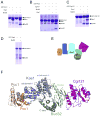
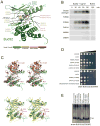
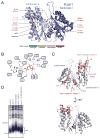
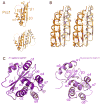
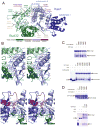
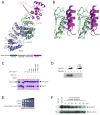

References
-
- Arigoni F, Talabot F, Peitsch M, Edgerton MD, Meldrum E, Allet E, Fish R, Jamotte T, Curchod ML, Loferer H. A genome-based approach for the identification of essential bacterial genes. Nat Biotechnol. 1998;16:851–856. - PubMed
-
- Bax A, Grzesiek S. Methodological Advances in Protein Nmr. Accounts of Chemical Research. 1993;26:131–138.
-
- Cornilescu G, Delaglio F, Bax A. Protein backbone angle restraints from searching a database for chemical shift and sequence homology. J Biomol NMR. 1999;13:289–302. - PubMed
-
- Dar AC, Dever TE, Sicheri F. Higher-order substrate recognition of eIF2alpha by the RNA-dependent protein kinase PKR. Cell. 2005;122:887–900. - PubMed
Publication types
MeSH terms
Substances
Associated data
- Actions
- Actions
- Actions
- Actions
- Actions
- Actions
Grants and funding
LinkOut - more resources
Full Text Sources
Other Literature Sources
Molecular Biology Databases
Research Materials

